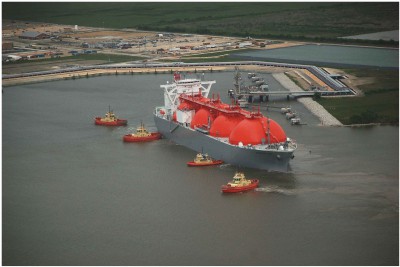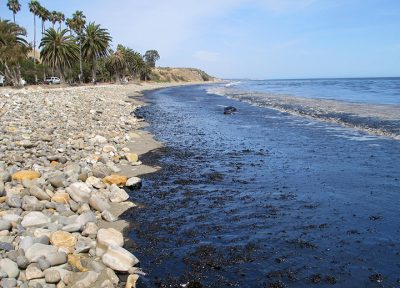Kendra Daniels of Atlantic Beach grew up in Port Neches, a Texas town about 45 miles from Houston and about 20 miles from the Gulf of Mexico.
It’s a relatively small town — about 13,000, according to the 2010 census — but is part of the much larger Beaumont-Port Arthur metropolitan area. It’s also near what might be considered the epicenter of the Texas-Louisiana portion of the Gulf of Mexico oil and gas industry.
Supporter Spotlight

Most of the big players are in Port Neches or in the metropolitan area: Shell, Exxon Mobil, Huntsman, Valero and Koch. You couldn’t pay Daniels enough to abandon the Crystal Coast of North Carolina and go home.
“I grew up there, and you didn’t think much about the oil industry at the time,” she said recently. “It was all around you, but that was your world. You were surrounded by refineries, several of the largest, and everything else that goes with oil, and it smelled all the time. But people just told you it was the smell of money, and you just accepted it.”
Daniels went off to college, and when she came back, her perspective had changed. “After you go away and see what it’s like not to have it, and then come back, you notice everything,” she said. “You notice that sometimes when you get in the water at the Gulf, you come out with some oil on you. Maybe not much, but something. And you can almost always see it on the beach, the little tar balls, or big ones. It’s just about always there.”
She moved to Denver but longed for the ocean. She then settled on Bogue Banks on the N.C. coast.
While many natives consider Atlantic Beach overdeveloped, to Daniels, banks town was pristine. She couldn’t see oil wells from the beach, she didn’t see refineries in town, she didn’t see pipelines and waste plants, or oil on the beach or in the water, and she saw much more marine life.
Supporter Spotlight
In short, it wasn’t Port Neches. “There are all the companies and plants that service the industry, more than you can imagine,” she said. “There are waste facilities and chemical plants. You really can’t imagine it all unless you’ve been there. And once it starts, there’s no turning back. You’ll just have to live with it: the pipes, the refineries, the waste facilities, the noise and smoke. All of it.”
Wilma Subra also knows the Gulf Coast oil industry; she’s been involved in it for decades. A Louisiana native, she holds degrees in microbiology and chemistry from the University of Southwestern Louisiana. She founded a chemistry lab and environmental consulting firm, Subra Co., in New Iberia, La., in 1981. She’s served terms on key Environmental Protection Agency panels and has won a MacArthur “Genius Award” for helping ordinary citizens understand, cope with and combat environmental issues related to oil and gas in their communities.
Subra is familiar with the N.C. coast, and said there’s no way the state’s residents can comprehend the changes that would take place – slowly at first, but later at breakneck pace – if the state becomes a hub for offshore oil.
“Everything, literally everything, could change,” she said. “The coast of North Carolina is known worldwide for its beautiful, unspoiled beaches and fishing and a relatedly slow pace, where people can come and relax. Oil would change all of that. And it wouldn’t take that long.”
New docks will be needed at the state ports in Morehead City and Wilmington and elsewhere, Subra said. But that’s just for starters. There will have to be places to store the waste from the drilling rigs, she said, and all the chemicals and additives used on the rigs.
“There will have to be injection wells for the water and brine,” Subra said. “You have a shallow water table and you’re going to have to be concerned about that. To be honest, it’s one thing to tell someone all that goes into oil wells – what you have to have onshore – but you have to see it.”

One of the biggest needs of the industry, she said, is that wide array of facilities to handle the waste. There will, she said, need to be “land farms” for soil and semi-solid waste, new landfills, chemical treatment plants, oil and gas waste-recycling plants. There will have to be crude oil separation facilities to remove the produced water and production sands from the oil, as well as crude oil storage, processing and distribution facilities.
More than just oil and natural gas comes out of a hole drilled in the seafloor. For every barrel of oil comes about seven to 10 barrels of what the industry calls “produced water.” Natural gas wells typically produce less water. It’s mostly a mixture of salt and oil but can contain heavy metals such as lead and chromium, residues of the chemicals used to drill the hole and naturally occurring radioactive elements.
Another major byproduct of drilling is what’s called, drilling muds or fluids. These fluids are continuously pumped down the hole to lubricate and cool the drill bit and control pressure in the shaft. The mud is typically made up of a base fluid, such as water or diesel or mineral oil, chemical weighting agents, bentonite clay, lignites to keep the mud in a fluid state and various additives that serve specific functions.
At offshore wells in the United States, the produced waters are dumped overboard if they meet EPA discharge standards. The muds are recycled but can also be dumped in the ocean if they don’t violate standards.
The types of businesses that the rigs attract, Subra said, are not the “clean and quiet” types that coastal towns have traditionally sought to lure tourists. Many of those companies, she said, will build in low-income areas, where land is cheapest and residents and business owners have fewer resources to fight rezoning petitions and plans.
Enforcement of environmental rules will likely slacken, she said, and the state may rush to weaken the rules. This is not a one-time occurrence, Subra added, because as it becomes the “economic driver” in an area, Big Oil becomes more powerful and is not hesitant to use its increasing influence to get what it wants and needs.
“A network of pipelines will be required to connect the offshore rigs to the mainland to move the oil and/or gas, and in some cases to transport waste,” she said. “Unless the state and local governments have very strict regulations and enforce them – and that’s not likely if those governments invite oil in – they will go through your estuaries. Marshes and wetlands will be disrupted or destroyed, erosion will occur. The coastline moves inward, and you get more flooding.”
Obviously, not everyone agrees, with her assessment. A 1982 N.C. State University report on pipelines, conducted during the last big offshore oil debate in North Carolina in the mid-1980s, concluded that, “the resources and activities that are sensitive to pipeline construction and operation are for the most part small and scattered; they do not cover large areas encompassing most of the coastal zone. As a result, it should be possible to thread a pipeline through these areas across almost any section of the coast with minimal impact … It is our impression that, for the most part, acceptable windows may be found throughout the coastal zone at distances of no more that 5 to 10 miles apart.”
Still, the report, co-authored by Drs. F. Yates Sorrell and Richard R. Johnson of the school’s engineering department, included a daunting list of areas and things to avoid, including: habitat of threatened or endangered species, productive wildlife areas, recognized natural areas, state and national parks and seashores, productive game lands, visually important landscapes, historic places, military-activity areas, artificial reefs and wrecks, major ship anchorages, live ocean bottoms, large areas of barrier island dunes, wetlands, turtle-nesting beaches, oyster reefs, grass beds, waterbird nesting sites and major wintering sites, maritime forests. The list goes on.
“The oil companies will tell you all these things can be avoided, but if they can’t, there will be enormous pressure to go ahead anyway,” Subra said. “And pipes break.”

Most recently, for example, a 24-inch pipeline owned by Plains All American Pipeline ruptured on May 19 in Santa Barbara, Calif., spilling an estimated 105,000 gallons of heavy crude and fouling miles of shoreline, closing beaches from the Memorial Day weekend into June.
The ongoing cleanup could last months, and it was not the first in Santa Barbara. A February 1969 spill there became what was, at the time, the nation’s worst offshore oil disaster. About 3 million gallons of oil spewed from a Union Oil drilling rig five miles off the coast of nearby Summerland, Calif. The oil plume killed thousands of seabirds and fish and coated about 35 miles of coastline with oil up to six inches thick. Nearly 800 square nautical miles of ocean were affected and the incident spawned the first Earth Day the following year.
According to the website Pipeline 101, though, the safety performance of the oil pipeline industry has improved over the last 15 years or so. In 2013, pipelines transported more than 14 billion barrels of crude oil, gasoline, diesel and jet fuel across the nation. Almost all of them reached their destinations safely, the site indicates.
From 1999-2012, the number of spills from onshore liquid petroleum pipelines was reduced by about 62 percent while volumes spilled were reduced by about 4 percent based on reports from pipeline operators to the Pipeline Performance Tracking System, an industry pipeline database.
Subra doesn’t doubt the improvements, but she said oil industry spokesmen will tell you the chances of pipeline ruptures or breaks are infinitesimal, when in truth small ones occur with alarming frequency.
The bottom line on infrastructure, she said, “is that there is no doubt there are economic benefits, but there are also great costs. And whatever the oil companies might say, life as you have enjoyed it will not be the same.”

But David McGowan, director of the N.C. Petroleum Council, said not much of the “Gulf scenario” is likely to be seen along North Carolina’s coast, for a variety of reasons.
Refineries, he noted, are expensive to build – there haven’t been any new ones in 25 years or so – and there is existing infrastructure, including refineries, along the Delaware River in the Philadelphia area. It’s more logical to send oil or gas there, McGowan said.
The industry, he said, is increasingly moving toward servicing rigs onsite, pulling a tanker right up to the platform, loading the oil and hauling it to places like those Delaware River refineries.
But if oil or gas is found, McGowan said, Norfolk, Va., is likely off-limits because of military conflicts, and the ports at Charleston and Savannah are probably too far south to make sense. Wilmington, he said, might get some activity if the production takes place near the North Carolina-South Carolina border, but the more likely scenario is some development – but not refineries – in Morehead City, if production takes place in the central or northern part of North Carolina.
“What you would be likely to see, if dredging issues are involved in and around Morehead, would be basing of supply vessels, some fabrication – light manufacturing, putting pieces together – and maybe some helicopter operations and things associated with that,” he said.
McGowan said he grew up in Wilmington and still has close ties there, and is cognizant of and to some degree shares coastal residents’ concerns about rapid industrialization.
But, he added, “I absolutely think that if you did see oil- or gas-related development in Morehead City, it wouldn’t be anything like what you see along the Gulf.”
Friday: Oil and tourism








